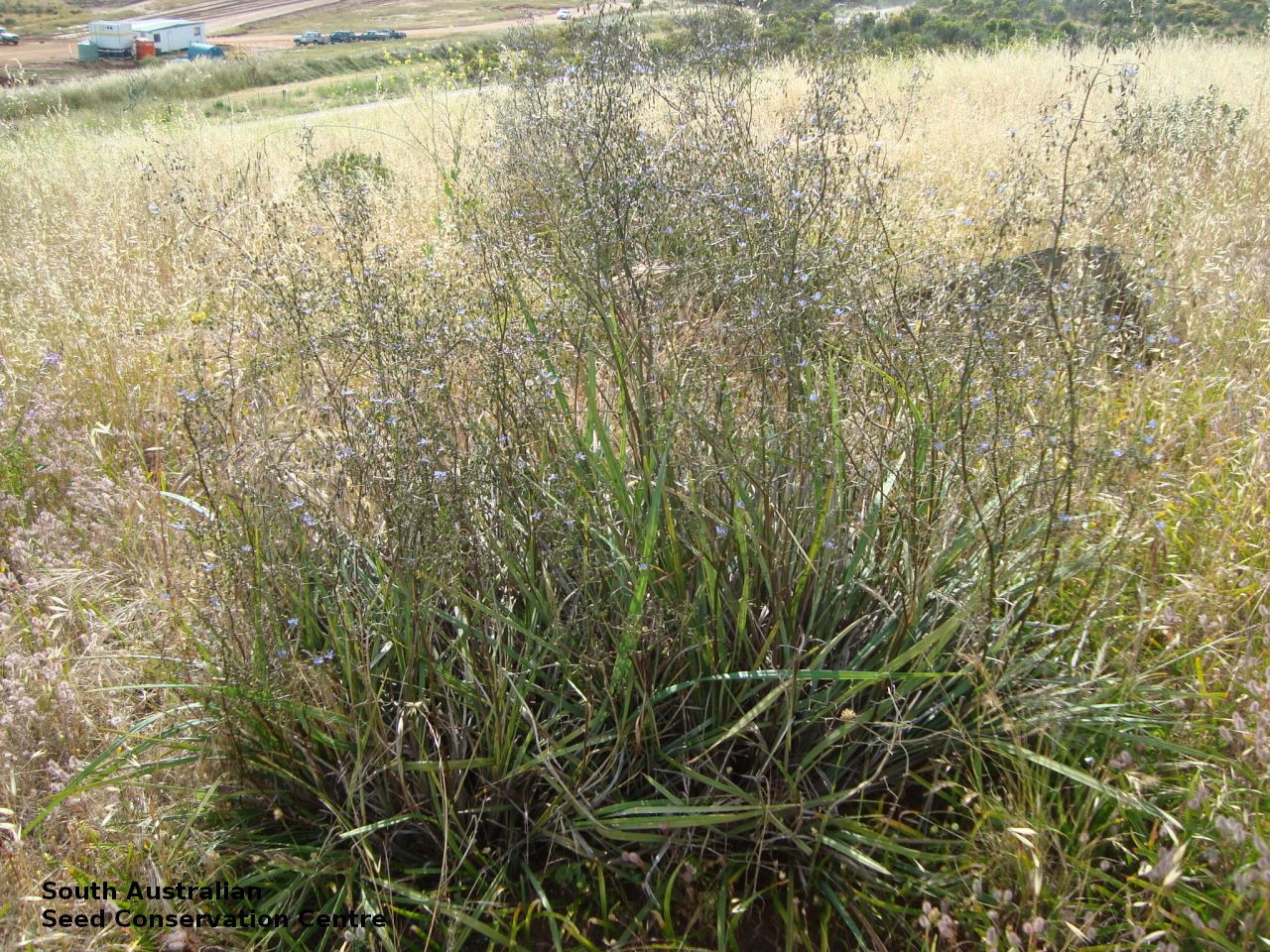
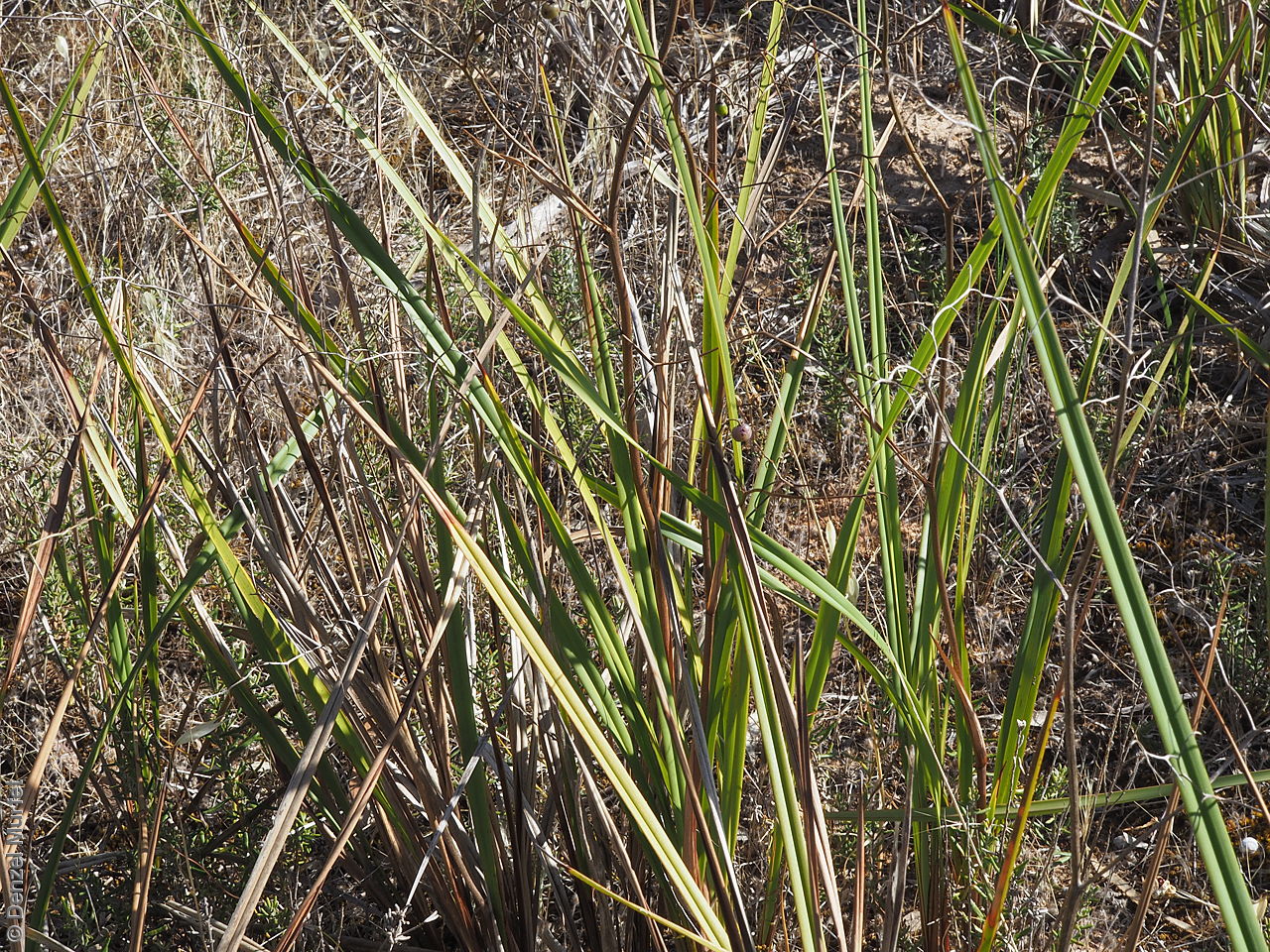
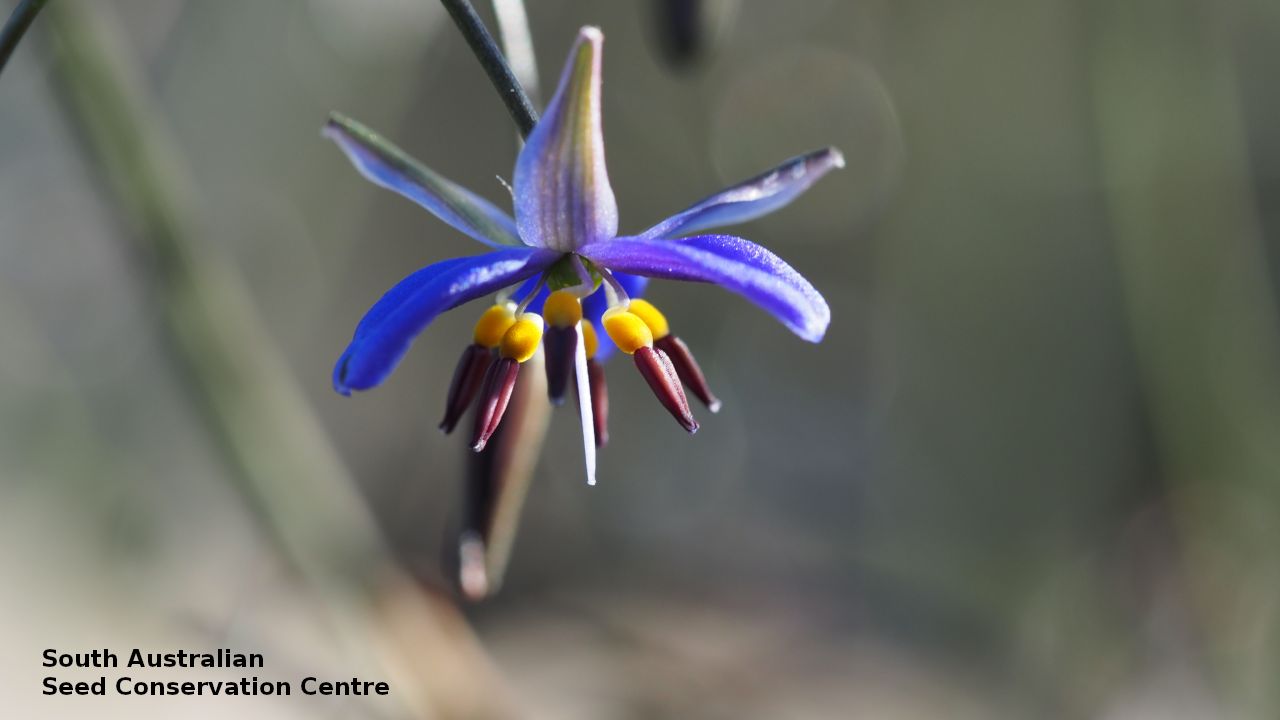
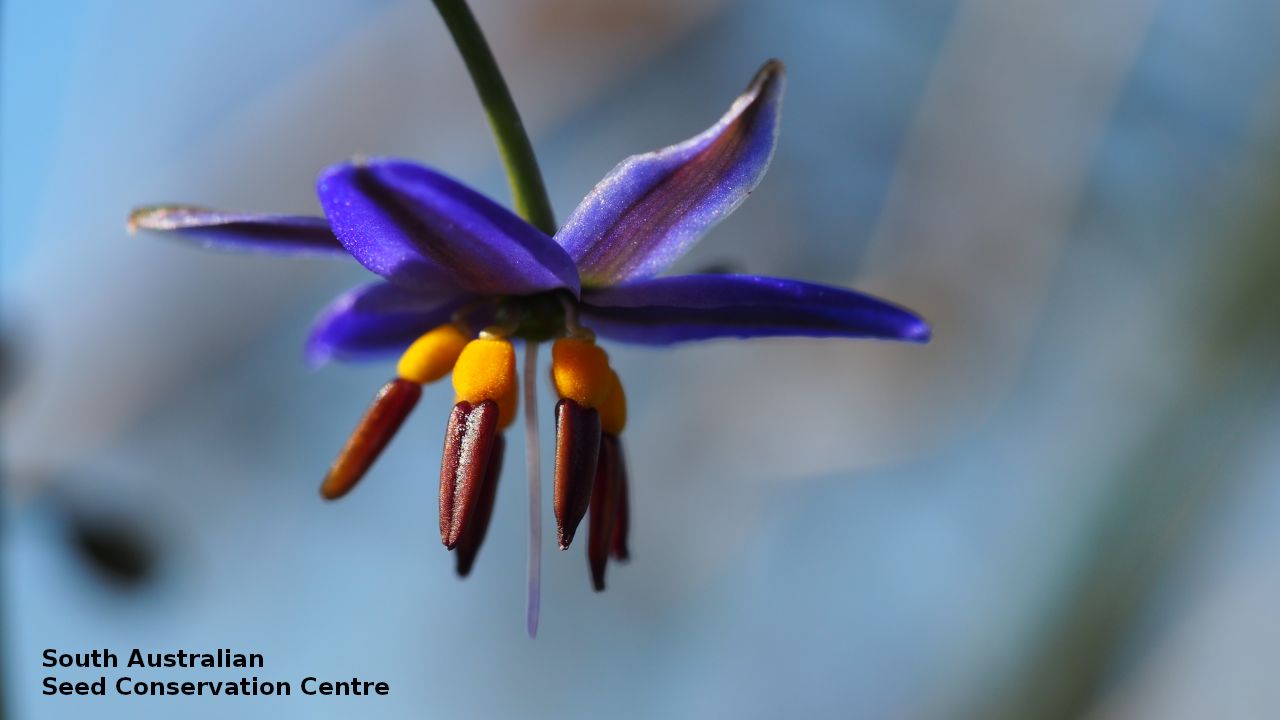
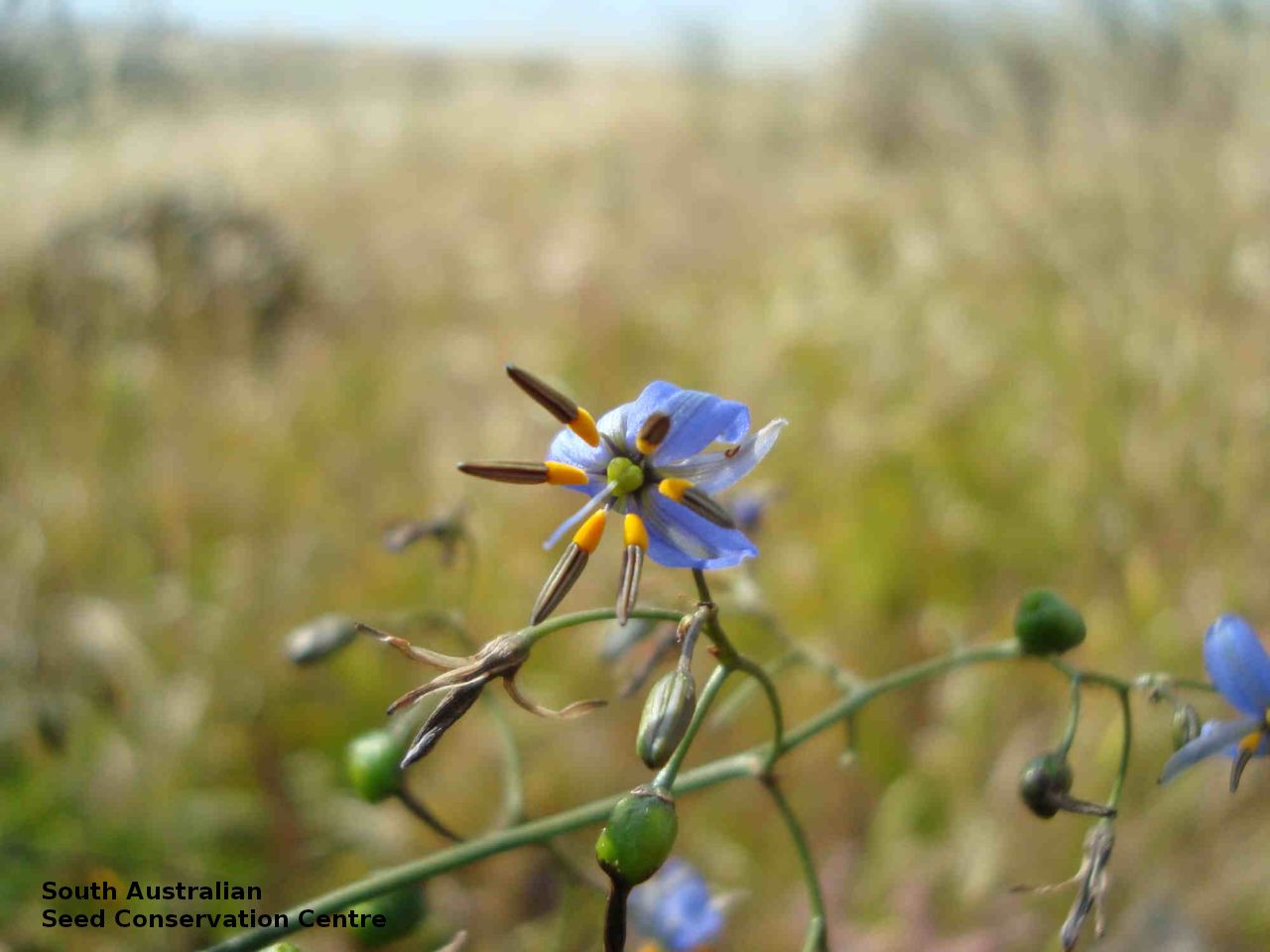
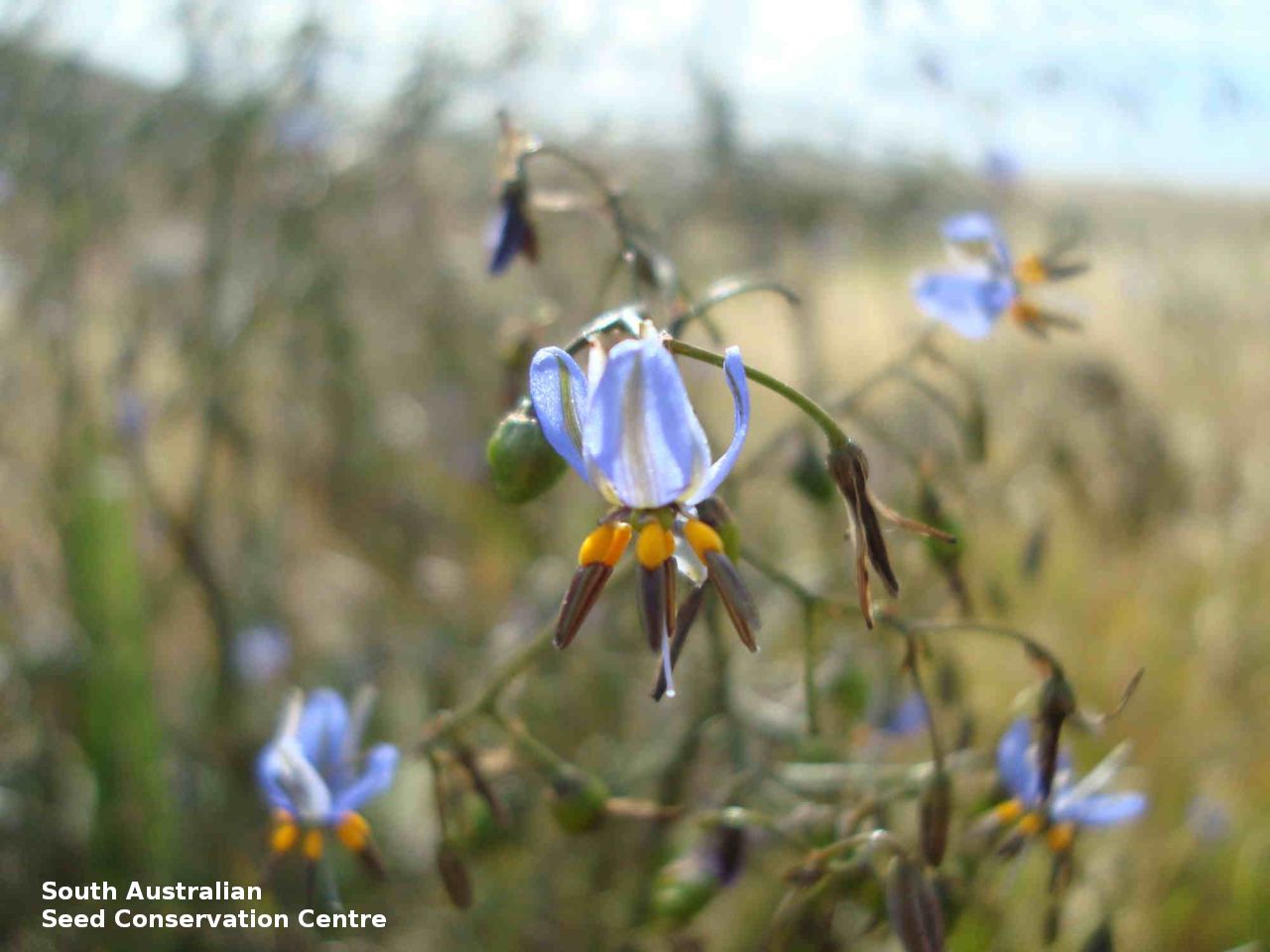
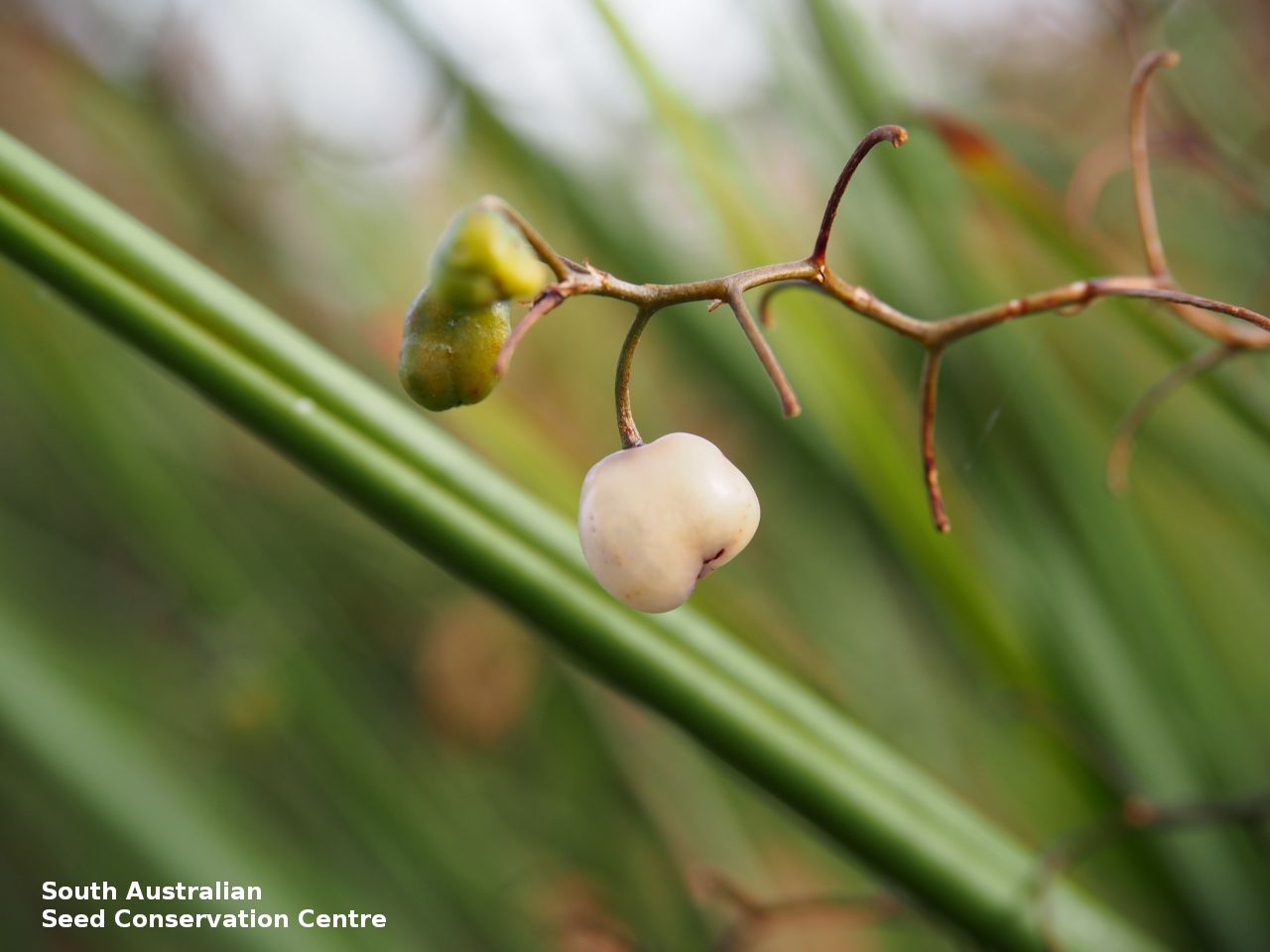
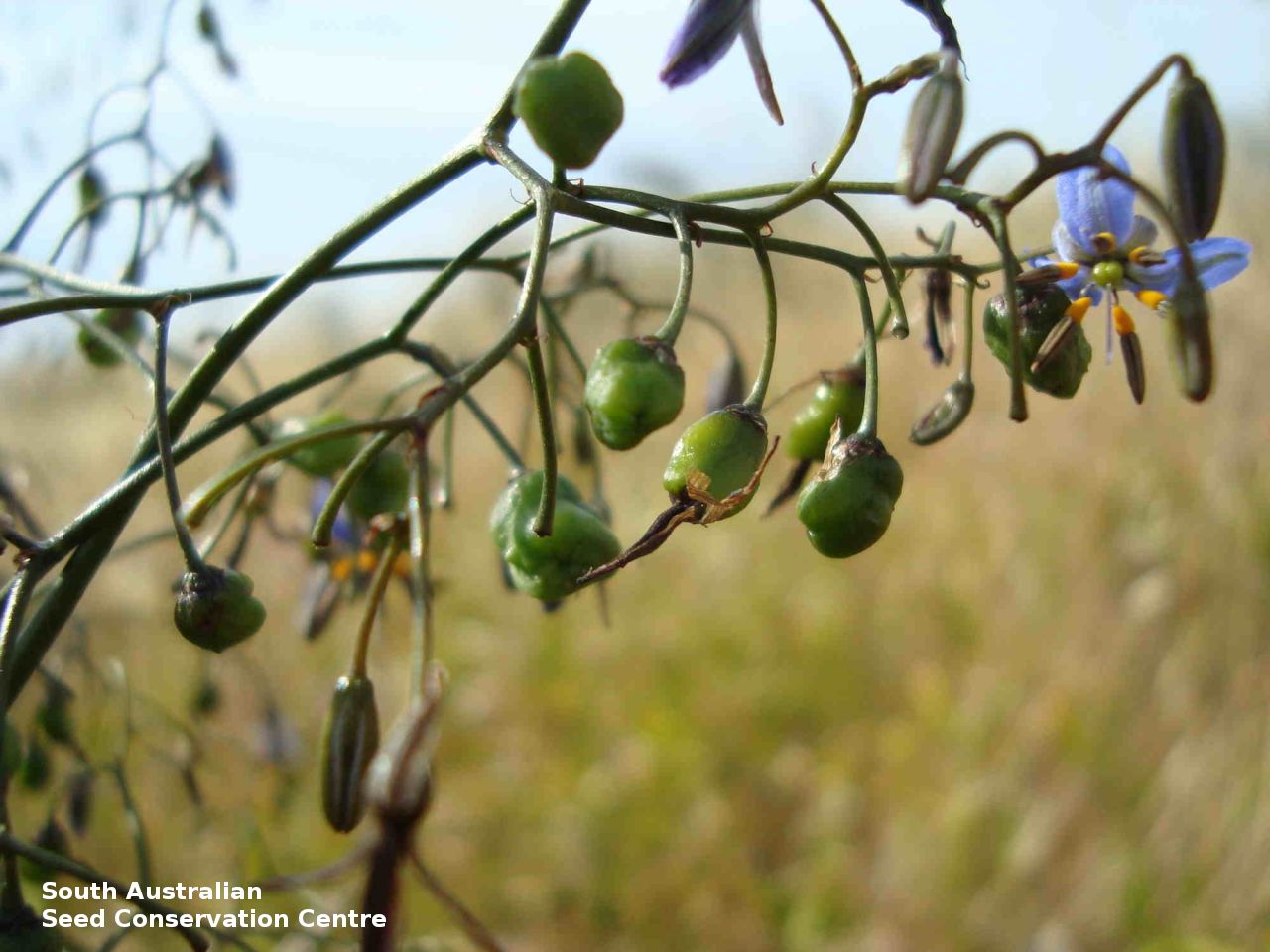
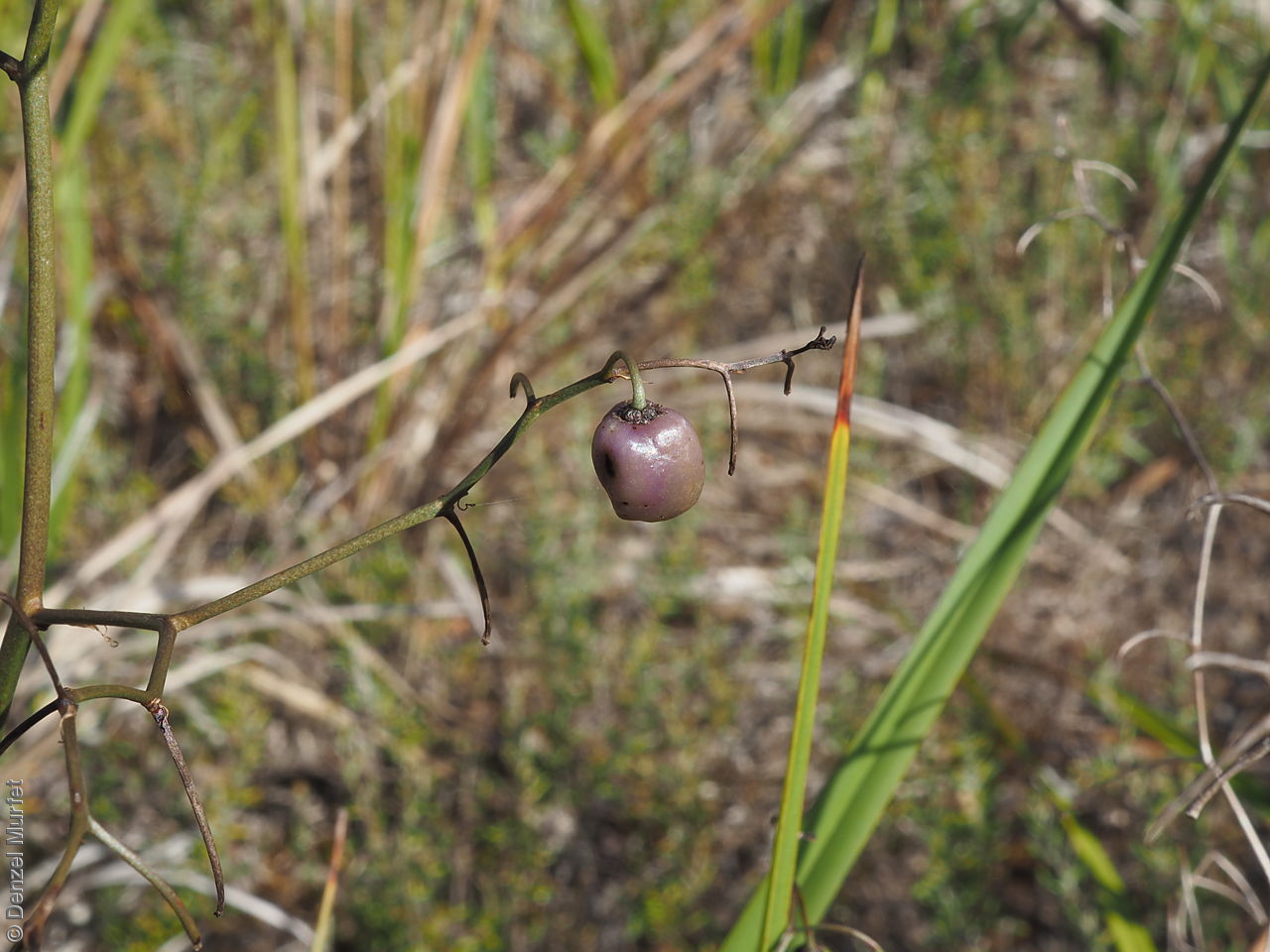
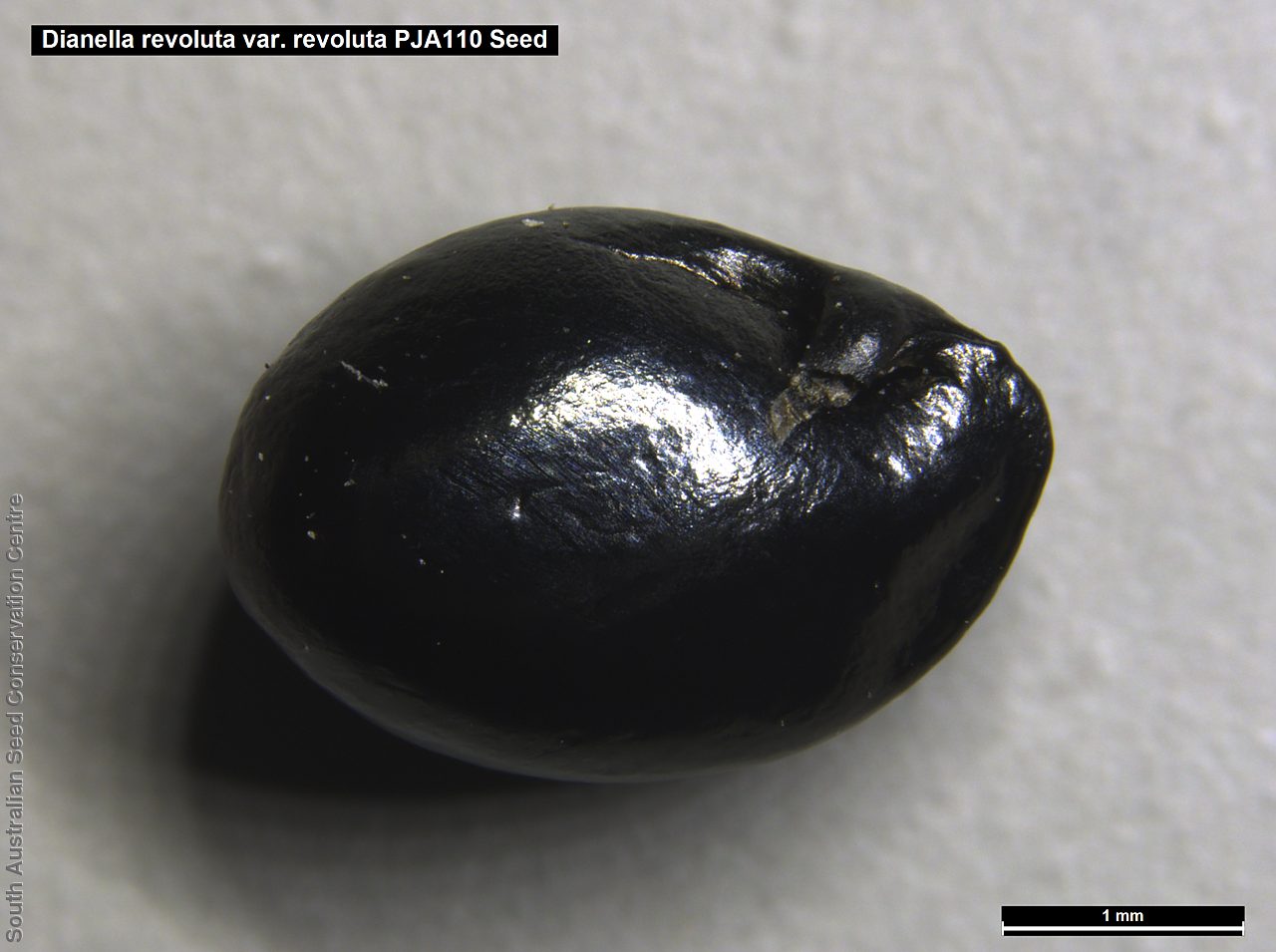
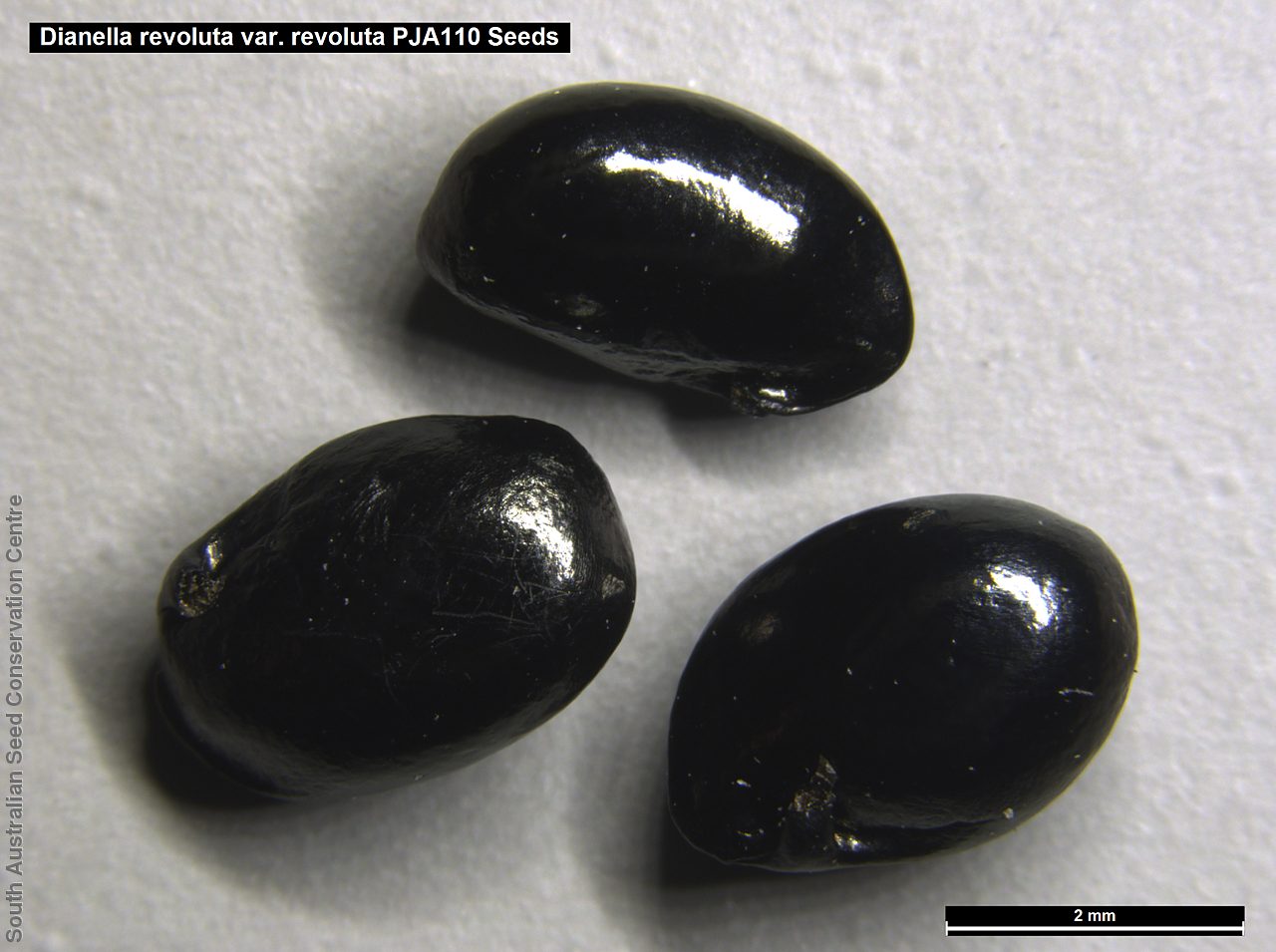
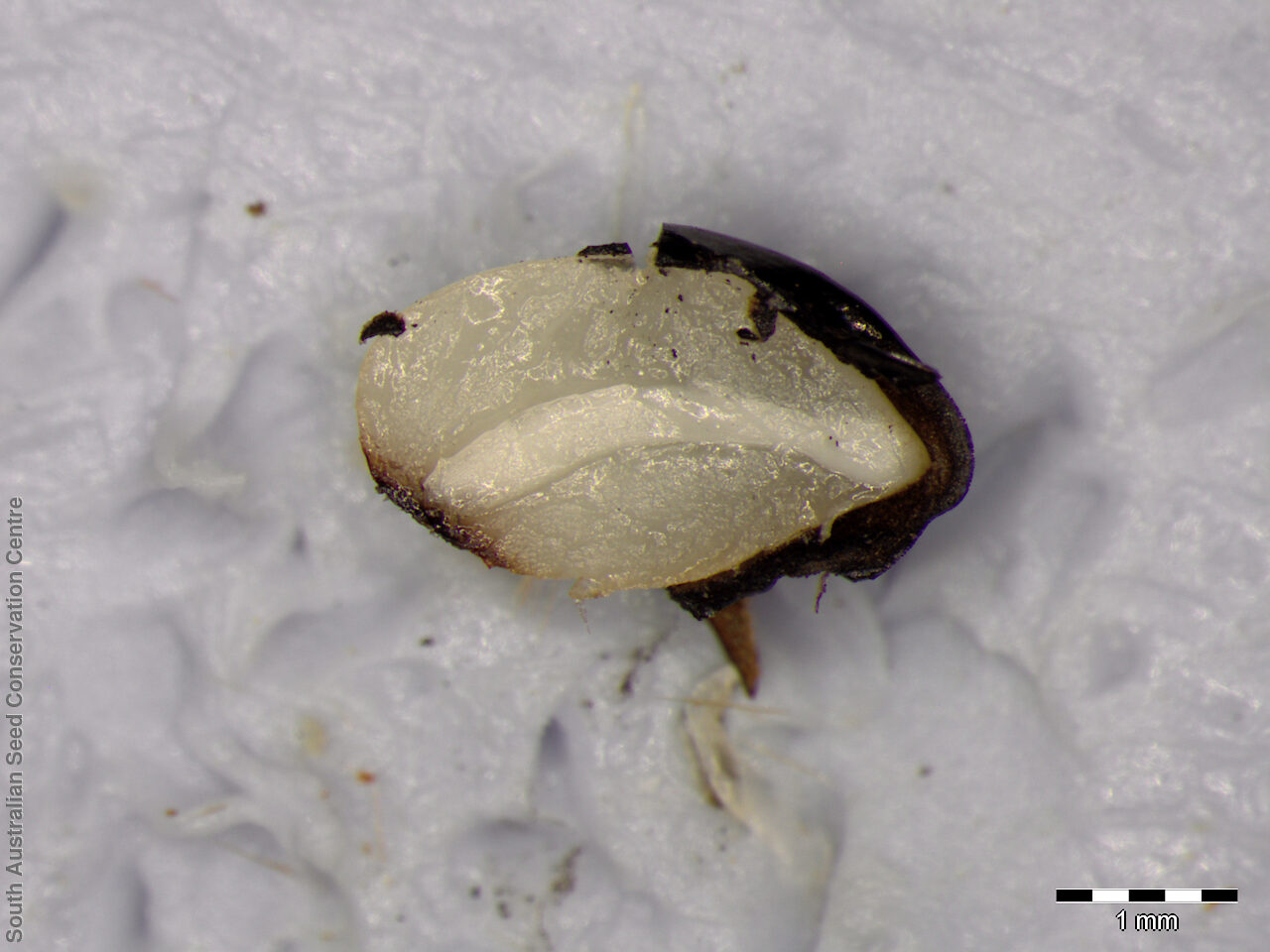
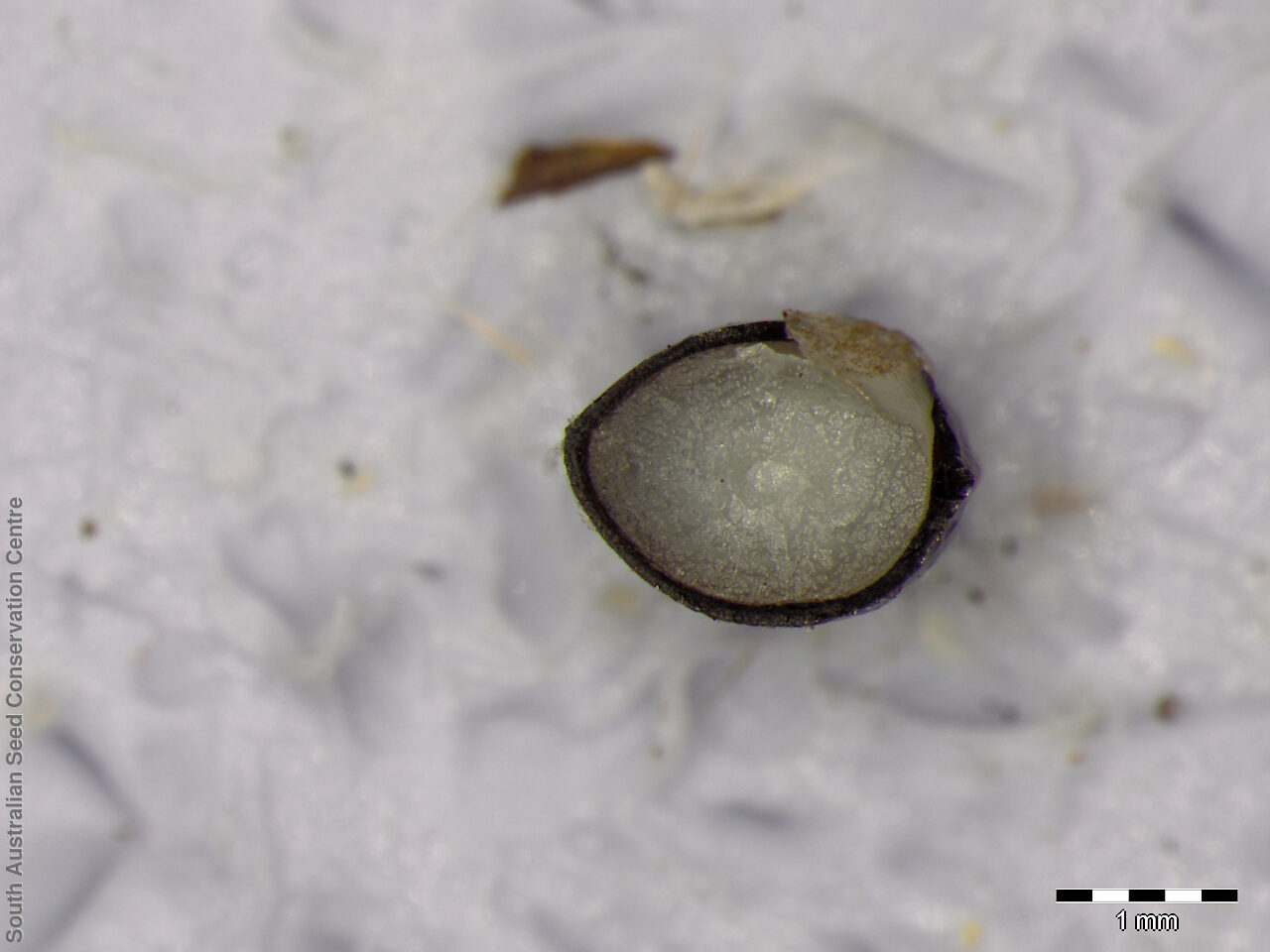

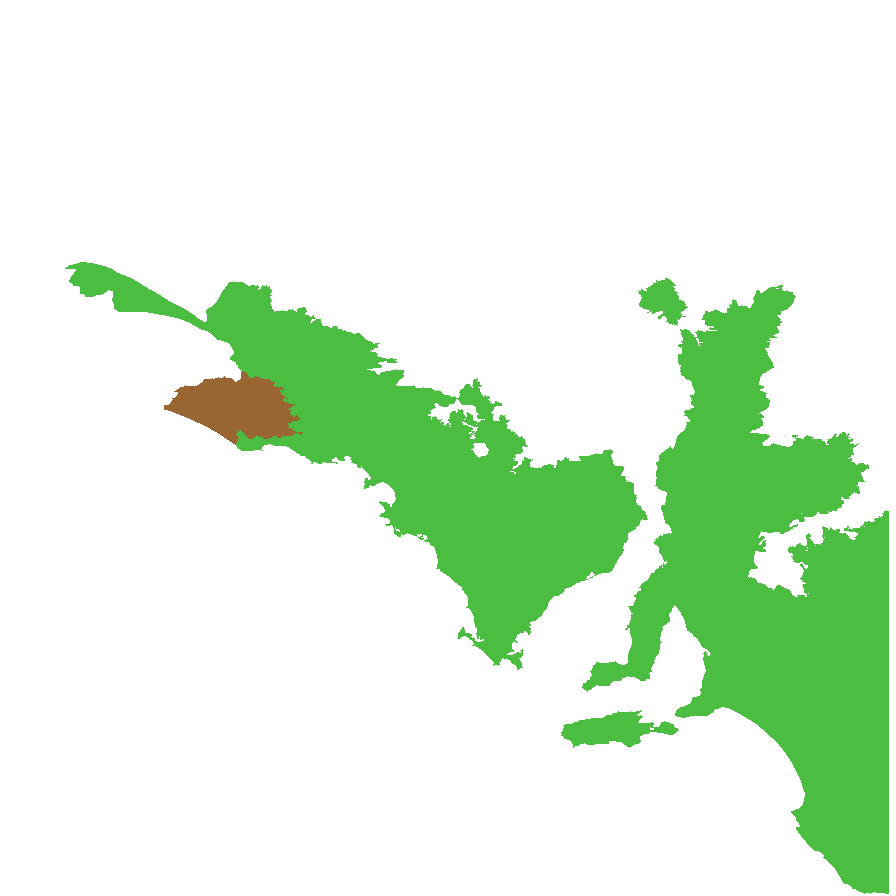
Botanical art
Common names
Spreading Flax-lily
Black-anther Flax-lily
Etymology
Dianella is a diminutive of Diana, the virginal Roman goddess of hunting and the moon. The original species described was found located in the French woods, thus the hunting association. Revoluta from the Latin 'revolvere' meaning to roll back, referring to the rolled under margin of the leaves.
Distribution and status
The taxonomy of the Dianella revoluta group is under revision and the distribution will change. It was previously recorded in the southern part of South Australia, from the Gammon Ranges to the lower South-east,and also recorded from Western Australia, Queensland, New South Wales, Victoria and Tasmania. The taxonomy of the Dianella revoluta group is under revision and the status will change. It was previously considered common in South Australia and common in other States.
Herbarium regions: Flinders Ranges, Eastern, Eyre Peninsula, Northern Lofty, Murray, Yorke Peninsula, Southern Lofty, Kangaroo Island, South Eastern, Green Adelaide
NRM regions: Adelaide and Mount Lofty Ranges, Eyre Peninsula, Kangaroo Island, Northern and Yorke, South Australian Arid Lands, South Australian Murray-Darling Basin, South East
AVH map: SA distribution map (external link)
Plant description
The taxonomy of the Dianella revoluta group is under revision and the description will change. It was previously described as an erect perennial lily to 1m tall, either solitary or forming a mat. Leaves are rigid and usually basal, with the base being flat and the margin recurved. Flowers are blue along a large stalk with dark brown to black anthers, appearing in spring and summer. Fruits are round blue berries containing numerous seeds. Seeds are shiny black ovoid seeds to 5 mm long and 2 mm wide. Seed embryo type is linear fully developed.
Seed collection and propagation
Collect seeds between November and February. Pick the fruits that are soft and purple. These will have hard black seeds inside. It is best to clean the fruit when it is fresh. Place fruits in a bucket of water and rub the fruit gently by hand to dislodge the seeds. Then use a sieve to separate unwanted material. Store the seeds with a desiccant such as dried silica beads or dry rice, in an air tight container in a cool and dry place. Seed viability is usually high. Seeds are non-dormant, viable seed should germinate readily.
| Location | No. of seeds (weight grams) | Number of plants | Date collected | Collection number Collection location | Date stored | % Viability | Storage temperature |
|---|---|---|---|---|---|---|---|
| BGA | 970 (4.93 g) | 70 | 3-Feb-2005 | DJD105 South Eastern | 28-Mar-2006 | 90% | -18°C |
| BGA | 420 (2.1 g) | 20 | 21-Jan-2005 | MKJ75 South Eastern | 28-Mar-2006 | 90% | -18°C |
| BGA MSB | 2,550 (12.83 g) 2,500 (12.83 g) | 150 | 15-Dec-2005 | PJA110 Murray | 10-Aug-2006 | 100% | -18°C |
| BGA | 1,880 (8.7 g) | 40 | 2-Dec-2010 | Kanmantoo Murray | 1-Jan-2012 | 95% | -18°C |
Number of plants: This is the number of plants from which the seeds were collected.
Collection location: The Herbarium of South Australia's region name.
% Viability: Percentage of filled healthy seeds determined by a cut test or x-ray.